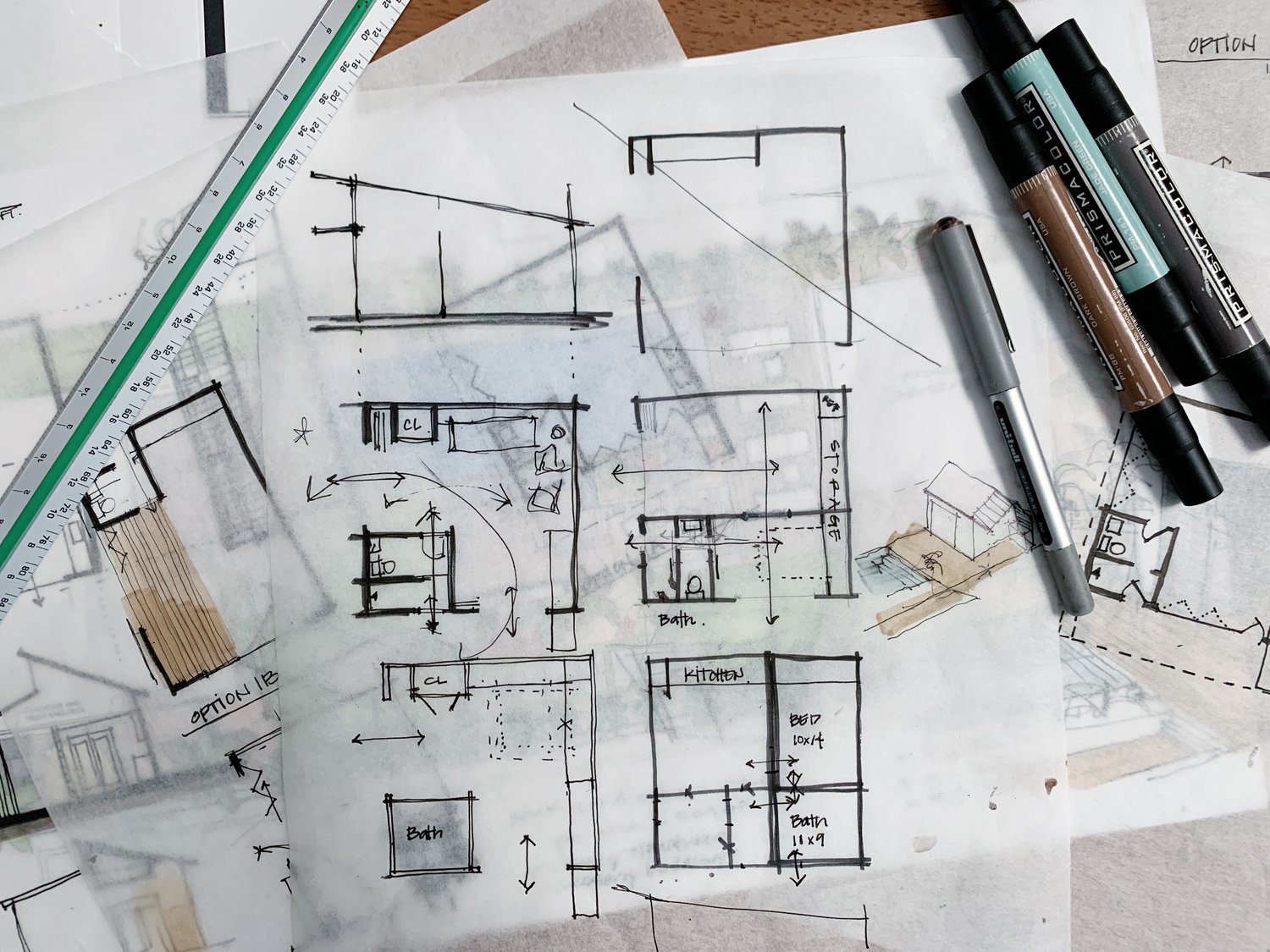Architect Marketing Strategies to Attract Luxury Clients
Recognizing the Diverse Profession Paths Available for Aspiring Architect
As a hopeful Architect, you have a world of occupation paths waiting on you. Each course provides one-of-a-kind challenges and possibilities to apply your imagination and technological know-how. Whether you're attracted to traditional design or the subtleties of sustainable style, there's a niche that aligns with your rate of interests. Understanding these diverse alternatives can shape your expert trip, but which direction will you select to discover first?
Conventional Style: Creating Structures and buildings
Traditional design concentrates on creating buildings and frameworks that mix performance with visual appeal. Your styles can show social heritage, showcasing local customs while meeting contemporary demands.
You'll establish abilities in preparing, model-making, and website evaluation, enabling you to visualize and interact your concepts successfully. Involving with clients, you'll need to recognize their vision and translate it into viable designs.
Additionally, building codes and sustainability techniques are important in your job, ensuring your structures are safe and eco-friendly. As you grow in your profession, you'll discover possibilities in residential, industrial, and even reconstruction tasks, each offering unique challenges. Accepting standard style leads the way for a satisfying occupation that admires the past while forming the future.
Urban Preparation: Shaping Areas and Public Spaces
As a hopeful Architect, you can play a crucial role as a metropolitan coordinator, transforming exactly how communities interact and operate. By using neighborhood interaction techniques, you'll guarantee that residents have a voice in forming their atmosphere. Plus, integrating sustainable layout principles will aid produce spaces that not just satisfy today's requirements but additionally shield the future.
Function of Urban Planners
While lots of may think of engineers as the single visionaries behind buildings, metropolitan coordinators play a crucial function fit the more comprehensive landscape of neighborhoods and public spaces. They evaluate land usage, zoning laws, and community requires to produce lasting atmospheres that boost high quality of life. By collaborating with various stakeholders, you'll assist design parks, transport systems, and domestic locations that advertise social interaction and ease of access. Urban organizers likewise concentrate on environmental factors to consider, making certain that developments integrate eco-friendly spaces and support biodiversity. Your competence in spatial layout and community characteristics permits you to visualize future development while maintaining cultural heritage. In this crucial role, you'll straight influence just how individuals experience their surroundings, making every task a possibility for favorable adjustment.
Neighborhood Involvement Strategies
Efficient area interaction strategies are crucial for city coordinators to assure that the voices of residents are listened to and valued in the preparation process. To cultivate purposeful dialogue, you ought to prioritize open discussion forums and workshops where community members can reveal their ideas and worries. By proactively listening and integrating feedback, you'll produce rooms that mirror the community's requirements, inevitably leading to even more sustainable and successful metropolitan atmospheres.
Lasting Layout Principles
When developing urban spaces, including lasting style principles is crucial for developing settings that prosper both ecologically and socially. Take into consideration incorporating green rooms, like parks and yards, to boost biodiversity and enhance air quality.
Creating with water conservation in mind is additionally vital-- consider rain yards and absorptive surface areas to take care of stormwater. Involving neighborhood members during the planning procedure assurances that the areas you produce meet their needs and urge social interaction. By embracing these principles, you'll add to lively, sustainable metropolitan landscapes that profit everyone.

Landscape Architecture: Developing Lasting Outdoor Settings
As you discover landscape style, you'll uncover important layout concepts that create stunning and useful outside rooms. Lasting practices play an essential function in making certain these environments flourish while decreasing ecological impact. Plus, you'll find a range of job opportunities that allow you to make a real difference in how people engage with nature.
Style Concepts in Landscape
Recognizing design principles in landscape style is crucial for producing lasting outdoor settings that harmonize with nature. You'll need to ponder elements like balance, percentage, and range to guarantee your layouts really feel natural and inviting. Additionally, pay interest to seasonal modifications, designing with materials that match the surroundings year-round.
Sustainable Practices Overview
Sustainable practices in landscape architecture not just concentrate on looks but likewise focus on ecological wellness and resource preservation. You can design areas that promote soil health, such as practicing and making use of organic materials permaculture concepts. Ultimately, these techniques guarantee your styles profit both individuals and the setting for years to come.
Occupation Opportunities Expedition
With a solid structure in sustainable techniques, landscape style supplies a variety of profession paths that allow you to make a meaningful impact on the environment. Urban organizers often team up with landscape engineers to produce green rooms in city settings, boosting city livability. If you're enthusiastic regarding education and learning, think about ending up being a landscape design educator, motivating future generations.
Sustainable Style: Concentrating On Eco-Friendly Practices
As you discover your career in style, embracing green practices can set you apart in a competitive field. Lasting style focuses on developing buildings that lessen environmental influence while boosting passenger health. By including eco-friendly materials, energy-efficient systems, and sustainable structure techniques, you'll add to a greener future.
Beginning by getting knowledge of environment-friendly accreditations like LEED or BREEAM, which can bolster your qualifications. Think about just how all-natural light, ventilation, and thermal effectiveness can optimize layout. Team up with engineers and ecological consultants to innovate options that lower waste and save sources.
Don't neglect the value of community involvement-- engaging neighborhood stakeholders can motivate styles that balance with the setting. As clients increasingly focus on sustainability, your expertise in green practices will not only bring in projects yet also satisfy your enthusiasm for accountable architecture. Welcome this important aspect of the profession, and watch your profession flourish.
Historic Conservation: Safeguarding and Recovering Cultural Heritage
While you begin on your building journey, take into consideration the crucial function of historical conservation in maintaining our cultural heritage. This area concentrates on the protection and reconstruction of substantial buildings, websites, and frameworks that tell the stories of our past. By engaging in historic conservation, you'll aid secure the building legacy that shapes community identity.
As a historical preservation Architect, you'll evaluate historical significance and examine the condition of structures. You'll function very closely with conservationists and chroniclers to guarantee authentic restoration methods are utilized. This profession course discover this enables you to mix creative thinking with research, allowing you to design remedies that appreciate initial products and craftsmanship.
Your work not just adds to sustainability by reusing existing buildings however also cultivates a sense of pride within areas. Accepting this path will certainly assist you end up being a guardian of history, preserving the tales and visual appeals that improve our lives.
Inside Architecture: Enhancing Indoor Spaces
Historical preservation and interior design both share a commitment to boosting the developed environment, yet they concentrate on different elements. While historic conservation highlights keeping a structure's historical and cultural value, interior style absolutely nos in on maximizing indoor areas for performance and visual appeals.
As a hopeful Architect, you'll find that interior design permits you to blend creativity with technological skills. You'll design areas that not only look excellent but likewise promote convenience and effectiveness. This area involves recognizing just how light, color, you could try this out and products communicate within a room, affecting state of mind and functionality.
You'll service various tasks, from household homes to business workplaces, making certain that each atmosphere fulfills the requirements of its residents. By prioritizing individual experience, you can change insides right into functional and inspiring rooms, making a considerable impact on how individuals connect with their environments. Welcome the opportunity to boost interior environments and form the way individuals live and function.
Industrial Design: Merging Capability With Visual Appeals
Industrial style plays an important role in developing products that effortlessly blend aesthetic appeals with capability, making certain that what you make use of daily is not only visually enticing however also functional. As an ambitious Architect, you might immerse yourself in this field, focusing on developing every little thing from furniture to consumer electronics. Your job entails understanding user needs, products, and manufacturing procedures, allowing you to develop cutting-edge remedies that boost day-to-day experiences.
In commercial layout, you'll frequently team up with suppliers, marketing experts, and engineers, guaranteeing that your layouts are not only stunning but additionally possible. You'll discover to stabilize kind and feature, focusing on use without giving up design. By sharpening your site skills in sketching, 3D modeling, and prototyping, you'll be well-equipped to bring your concepts to life. This occupation course offers a dynamic atmosphere where creative thinking fulfills functionality, making it a rewarding selection for architects curious about forming the products of tomorrow.
Frequently Asked Concerns
What Educational Qualifications Do I Need to Come To Be an Engineer?
To become an architect, you'll require an expert degree in architecture, usually a Bachelor's or Master's. In addition, you'll need to finish an internship and pass the Architect Enrollment Assessment to exercise legitimately.
Exist Certification Demands for Different Building Occupation Paths?
Yes, there're certification requirements for numerous building courses. Architect. You'll need to pass exams, full internships, and occasionally go after specialized training, depending on your chosen emphasis, like landscape architecture, city style, or historical preservation
What Software Application Skills Are Necessary for Designers Today?

Exactly How Can I Gain Practical Experience While Researching Design?
You can gain practical experience by interning at building companies, joining design competitors, volunteering for neighborhood projects, or teaming up with schoolmates on real-world assignments. These opportunities boost your abilities and develop valuable connections in the industry.
What Task Opportunities Exist Outdoors Typical Architecture Firms?
You can discover various work opportunities outside standard architecture companies, like urban preparation, interior style, landscape design, building administration, realty advancement, or perhaps functions in sustainability consulting. Each deals unique obstacles and rewards.
Whether you're drawn to conventional style or the nuances of lasting layout, there's a particular niche that aligns with your passions.When developing urban rooms, including sustainable layout concepts is essential for producing environments that flourish both ecologically and socially.As you check out landscape design, you'll uncover necessary style principles that produce beautiful and useful exterior rooms.Comprehending layout principles in landscape design is vital for developing sustainable outside environments that balance with nature.In commercial design, you'll commonly team up with online marketers, engineers, and makers, ensuring that your designs are not only gorgeous but also possible.